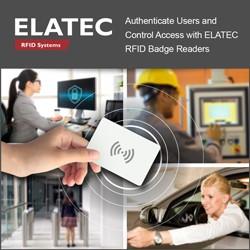Siemens and Microsoft to converge Digital Twin Definition Language with W3C Thing Description Standard
Collaboration with the W3C working group set to propel the convergence effort, bringing about a unified standard to unlock commercial potential being held back by IoT fragmentation
In a collaborative move with the W3C Consortium, Siemens and Microsoft have announced their commitment to converge the Digital Twin Definition Language (DTDL) with the Thing Description standard from international standards organization, W3C.
By unifying both languages, customers are offered consistent modeling experiences, mitigating fragmentation in an evolving IoT landscape. With customers typically deploying a mix of vendors in their infrastructure leading to lock-in and high integration efforts, this convergence will allow for simpler system integration and interoperability.
As virtual replicas of physical objects, processes, or systems that mirror their real-world counterparts in a digital environment, digital twins enable organizations to monitor, predict, and improve the performance of their assets, enhancing efficiency and reducing costs. Standardizing Digital Twin languages is therefore crucial for interoperability, ensuring seamless communication and integration between different digital twin systems and platforms.
With Siemens already facilitating the emerging W3C Thing Description standard for future products in building management, power distribution and smart grids, extending this interoperability strategy to Microsoft Azure will bring about substantial benefits to customers.
"We see the convergence of two very similar Digital Twin languages like the DTDL and the W3C Thing Description as an essential move that will enable customers to describe the physical world in a way that is agnostic to specific IoT platforms," said Thomas Kiessling, Chief Technology Officer at Siemens Smart Infrastructure. "This strategic alliance underscores our commitment to fostering collaboration and embracing openness."
Microsoft's Digital Twin Definition Language enables modeling of the physical world with Azure services, while the W3C Thing Description standard provides an interoperable representation of device interfaces and their incorporation of standard industry ontologies. Both languages have revealed many conceptual similarities during the initial stages of convergence.
"Ever since we invented the Digital Twin Definition Language and open-sourced its specification and reference implementations, we planned to standardize it through a consortium like the W3C. Therefore, merging DTDL with W3C Thing Description, in close partnership with Siemens, is the natural next step in our journey to democratize digital twins in the industry," said Erich Barnstedt, Chief Architect Standards, Consortia and Industrial IoT, Azure Edge and Platform team, Microsoft Corporation.
Featured Product

ELATEC RFID Systems - Ensure only those authorized have access
With a tap of the badge, RFID readers from ELATEC provide secure, reliable and easy-to-use user authentication, access control and usage tracking of hardware and software in industrial automation processes. Reader durability in harsh plant floor environments is another essential feature. Choose the right authentication and access control solution and extend RFID card-based capability for the access control of PLC, robot and HMI automation controller software and devices requiring special operator training.
